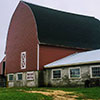Honoring those who protect, restore, and interpret the places that tell our story: Executive Constantine announces 2018 John D. Spellman Award winners
Summary
Executive Dow Constantine honored the recipients of this year’s John D. Spellman Awards for historic preservation at a ceremony hosted in Auburn.
Story
King County Executive Dow Constantine announced recipients of the 2018 John D. Spellman Awards for historic preservation, which included a new category for legacy businesses.
The award is named in honor of former King County Executive and Governor John Spellman, who passed away in January. He established the county’s Historic Preservation Program 40 years ago.
Executive Constantine honored award winners at a celebration at the Auburn Masonic Temple, which was one of the recipients.
“One of John Spellman’s lasting legacies as our county’s first Executive was instilling the importance of preserving the places that reflect our region’s shared history,” said Executive Constantine. “The historic preservation award named in his honor is even more important today as we experience unprecedented growth and rapid change. This year’s award recipients answered the call, protecting, restoring, and interpreting the places that tell our story.”
This year’s recipients of the John D. Spellman Awards for Exemplary Achievement in Historic Preservation are:
-
Patricia Cosgrove
Patricia Cosgrove, in recognition of dedication to the cultural heritage of Auburn and south King County. During her nearly 30-year tenure with the City of Auburn, Patricia oversaw the White River Valley Museum’s development into a regional facility featuring award-winning exhibits about culture, arts, and history. Cosgrove led restoration of the historic Mary Olson Farm in Auburn, raising $2 million for the project. The farm reopened in 2011 and is now visited by more than 2,000 students each year.
-
Auburn Masonic Lodge
Auburn Masonic Lodge, for restoration of the 1924 King Solomon Masonic Temple. Designed in the Italian Renaissance Revival style by noted Tacoma architecture firm Heath, Gove and Bell, the Temple building has continuously served as a lodge hall. The first floor housed many different commercial uses over the years, including Taylor Lemar Mortuary and National Bank of Commerce. The Lodge recently repointed the brick and restored several storefronts using historic photos as guides. -
The Tupper family
The Tupper family, for stewardship of their historic Gothic arch barn, which stands as a landmark in the Auburn-Enumclaw community and has been in the family for three generations. The barn was built by Harry Tupper in the mid-1940s. It stored hay and sheltered cattle for the next 70 years. A $26,000 grant from King County’s Barn Again grant program helped the family stabilize and rehabilitate the barn and extend the life of this working farm.
-
Sammamish Heritage Society
Sammamish Heritage Society, for its commitment to preserving historic resources on the Sammamish Plateau in the face of tremendous development pressures. The City of Sammamish is less than 20 years old, but the area has a 150-year history that the heritage society is works diligently to protect by disseminating historic information, surveying the remaining historic properties, and working with the city to develop procedures to guide treatment of historic buildings. -
The Roanoke Inn
The Roanoke Inn, in recognition of its continued contribution to Mercer Island’s cultural and community identity for more than 100 years. Built in 1914 by George McGuire for visitors arriving at the island’s Roanoke Dock, the building originally housed a chicken-dinner inn called the Roanoke. It has operated as a classic tavern and mainstay in the Mercer Island community since the end of Prohibition and has been continuously owned and operated by members of the Reeck family – changing very little – since 1943. The Roanoke Inn is the first Spellman award winner for the new Legacy Business category.
Jennifer Meisner, King County’s Historic Preservation Officer, was joined by Auburn Mayor Nancy Backus and Poppi Handy, King County Landmarks Commission Chair, to present Certificates of Designations to owners and stewards of recently landmarked properties:
- Dave and Monica Brethauer, for designating the sleek International Style former F.W. Woolworth Company Store as Renton’s first local landmark. The Woolworth Company store was established in the heart of Renton’s commercial district in 1954, and the building is associated with that national five-and-dime chain and the development of downtown Renton.
- City of Issaquah, for designating the Gilman Town Hall and Jail as an Issaquah landmark. As the second-oldest building in downtown Issaquah, the Gilman Town Hall marks the community’s transition from the mining settlement of Gilman to the vibrant town of Issaquah.
- The Museum of Flight, for designating The Boeing Airplane Company’s Building 105, commonly known as The Red Barn, as a Tukwila landmark. The Red Barn was constructed on the banks of the Duwamish River in 1909 and used initially as a boat shed before being converted to an airplane manufacturing plant by William E. Boeing in 1916. The Red Barn embodies the first 20 years of The Boeing Company's history.
- Kim and Dan Hartman, for designating the 1890 Folk Victorian-style Buchanan House a Kirkland landmark. One of only eight houses built by the Kirkland Land and Improvement Company, it was the home and office to Kirkland’s first physician, Dr. William D. Buchanan, and his wife, Abbie.
- The Northwest Railway Museum, for designating Puget Sound Electric Railway Interurban Car 523 a Snoqualmie landmark. Car 523 served the Puget Sound Electric Railway between Seattle and Tacoma from 1908 to 1928 and is the only known surviving car or locomotive of the Railway.
- Daniels Real Estate, for designating Saint Edward Seminary a Kenmore landmark. This imposing 82,000-square-foot building was designed by notable architect John Graham Sr. and is an outstanding example of the Late Romanesque Revival style. The seminary served as the Northwest’s preparatory school for the catholic priesthood from 1931 until its closing in 1976. The property is now owned by Washington State Parks.
The King County Historic Preservation Program was established in 1978 to identify, document, and protect the region's significant historic resources. The program staffs a nine-person Landmarks Commission, conducts environmental reviews in cooperation with other agencies and jurisdictions, manages a regional preservation program in partnership with numerous suburban cities, maintains an inventory of historic resources, and develops and implements incentives to support and encourage restoration and rehabilitation of historic properties.
Relevant links
- King County Historic Preservation Program
- VIDEO: Honoring the 2018 John D. Spellman Award winners
- VIDEO: King County's Barn Again Preservation Program
Quotes
One of John Spellman’s lasting legacies as our county’s first Executive was instilling the importance of preserving the places that reflect our region’s shared history. The historic preservation award named in his honor is even more important today as we experience unprecedented growth and rapid change. This year’s award recipients answered the call, protecting, restoring, and interpreting the places that tell our story.
For more information, contact:
Doug Williams, Natural Resources & Parks, 206-477-4543

 Translate
Translate






